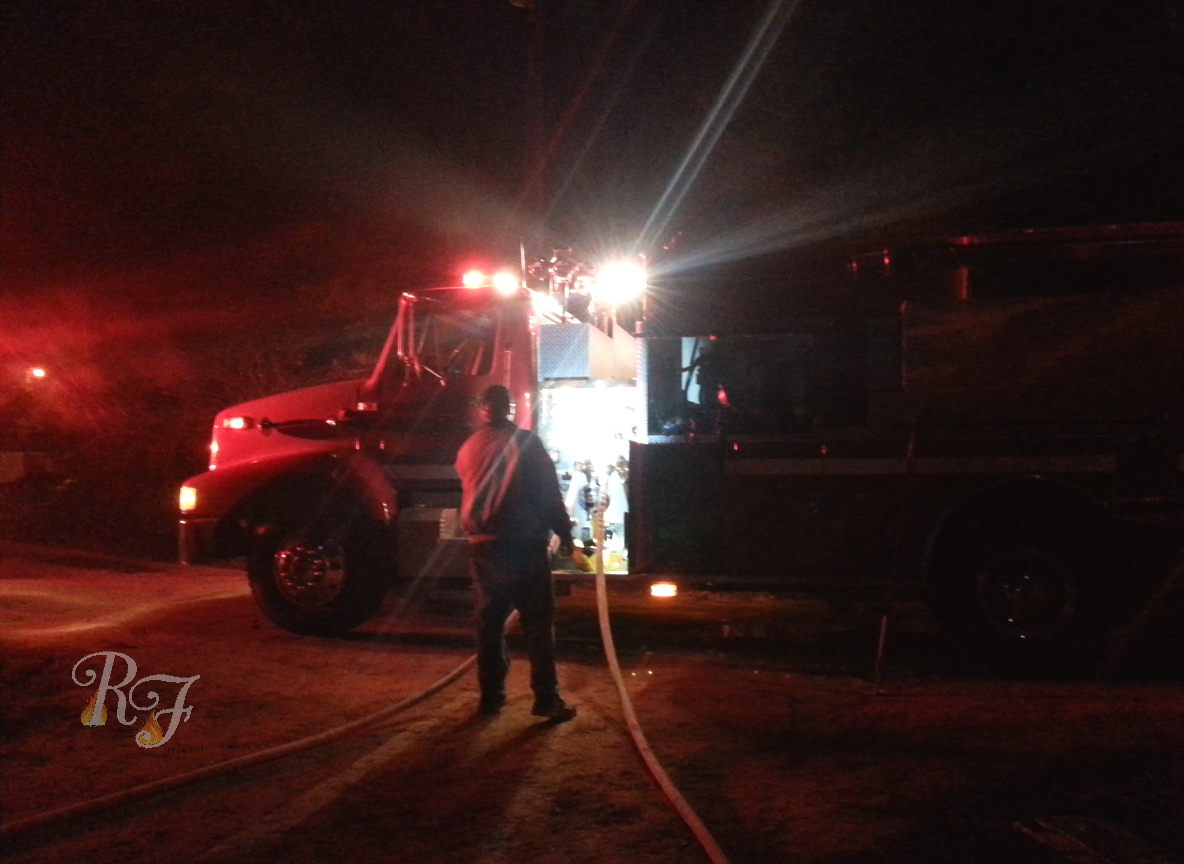A few days after being on the Active911 system, our department was paged out to a residential structure fire. I hit “responding” on the app on my phone, then I called the assistant chief so someone would know I was responding to the call. (Talking to one of the officers immediately after the page not only lets them know I’m responding to the call, but also allows me to get further instructions if needed. If I wait too late to call I’ve been told they won’t answer their cell phone because they’re driving. They’ll speak on the radio of course, but alas I haven’t been issued one yet since I’m still so new.)
As I drove out to the location of the house fire I was looking for any signs of smoke or emergency lights in the dark night. I didn’t have any reason to worry about finding the house though, because as I came around the last curve there was a huge orange glow in the night sky. I carefully parked on the side of the road and left my hazard lights on so any passing motorists would see my car.

The house was fully engulfed in flames and according to witnesses there was no one inside. I checked-in with the incident commander and he immediately gave me an assignment. From that point on when I wasn’t using a flashlight to keep a visual check on our firefighters attacking the fire on the side of the house, I was swapping out air bottles when they returned to the truck low on air.
Once the fire was under control I began filling out the report with the homeowner’s information. It felt a bit uncomfortable to be asking questions of someone who had just watched their house burn, yet it was a necessary part of the job.
Once the fire was completely out we began overhaul. I was able to practice using the fire hose to hit a few hot spots that were still smoking heavily. Then the incident commander showed me how to tell which direction the fire had spread and where the fire had the highest heat. Afterwards I was taught how to disconnect, drain, and roll up the hoses we had used. The used hoses were dirty so they all went on the back of the truck to be washed back at the station.
Top things I learned on this call:
- Never, ever, no matter how dark the road is, leave your hazard lights on in your personal vehicle at a scene. Just make sure your vehicle is parked completely off the road. Whether you’re there 1 hour or 3+ your battery won’t have enough of a charge to start the car. My battery needed a jump off to be able to go to the station and it was quite embarrassing, to say the least.
- Always have a flashlight on you. Several of us were sharing flashlights from the truck, so we made do, but having one of my own would’ve been helpful.
- When rolling hoses, always roll the male end on the inside.
Once back at the station we had to wash the dirty hoses and put clean hoses back on the truck. Then we all grabbed snacks and drinks, and sat around chatting to unwind after the call.
Until next time,
-Rookie ?
This is my favorite small flashlight because it’s super bright and fits easily in a pocket.
If you’re looking for something larger for your vehicle, this light is rechargeable and works great.
Affiliate Disclosure: Please note that when you click links and purchase items, in many (not all) cases I will receive a referral commission. Your support in purchasing through these links is much appreciated. -Rookie
